I DON’T IMAGINE WiFi HiFi Publisher John Thomson realized he was setting off a firestorm when he posed the question “Do Cables Matter?” in his weekly newsletter.
Reprinted from WiFiHiFi Magazine – Over the next few days, John’s inbox filled up with messages weighing in on both sides of the debate. Jim Thompson, a long-time Yamaha Canada rep who retired in 2008, recalled discussing the subject with Floyd Toole, who ran the acoustics program at Canada’s National Research Council in Ottawa before decamping to California to head up R&D at Harman International.
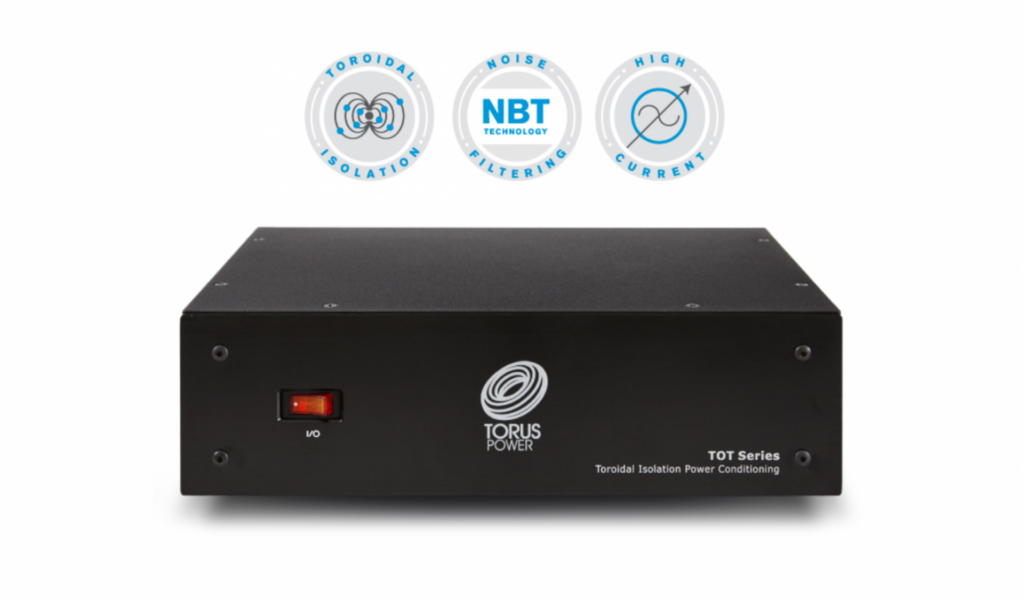
Torus Power’s TOT Max Toroidal Isolation power transformer has a 1,800VA transformer, and can deliver 15A of instantaneous current to devices connected to its eight AC outlets.
“Any claims of enhanced performance from high-priced audio cables are nonsense,” Dr. Toole maintained. “They’re nothing but jewelry.”
Garry Harrison, Senior Claims Coordinator, B.C. Interior, for Best Buy Canada’s ReClaim insurance replacement service, recounted a training session at Vancouver’s A&B Sound, during which he swapped a generic speaker wire and premium Monster product. The Monster rep rhapsodized about the superior sound of what he thought was a Monster cable, then backpedaled furiously when informed of the switch. Afterward, he never spoke to Harrison again.
Solidly on the pro-cable side was Sheldon Ginn, President, Kevro International, which distributes Tributaries cables in Canada. “Every day cables get the job done,” Ginn wrote, “but good speaker wire, interconnects and power cable … can make the difference between an enjoyable listen and one that produces goosebumps.”
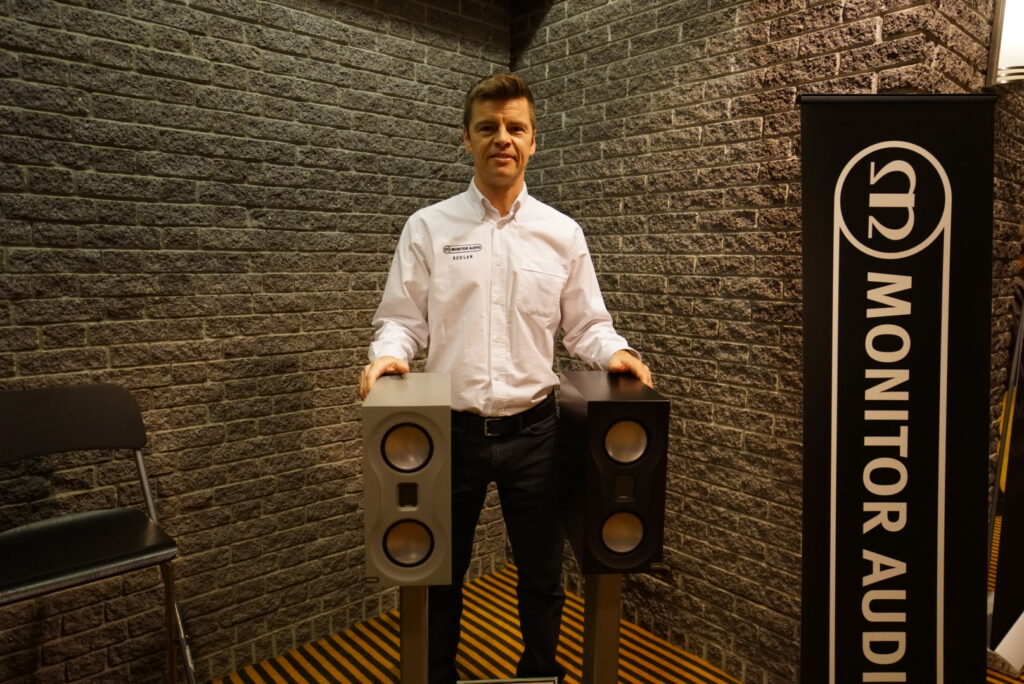
Sheldon Ginn, President, Kevro International,
The cable question has long been settled, insisted Saxe Brickenden, previously Director of Marketing for Evolution Home Entertainment Corp. Evolution was Monster Cable’s Canadian distributor during the 1980s and ’90s; its sister company Gemsen Holdings Corp. is the Canadian distributor for Wireworld products. “There should be no debate in 2015” on this question, Brickenden wrote. “Cable, like any link in the chain, does make a difference.”
ARCHED EYEBROWS
Of course, the debate about audio cables is very much alive. Indeed, there is no surer way to ignite a flame war on any of the audio-video forums that to raise the question of cables.
That said, there’s no serious debate that cables sometimes matter. For long runs, you need reliable cable for high-bandwidth applications like HDMI, digital data and video. That’s vital for the custom channel. As Brickenden comments, “When an HDMI cable doesn’t work, it costs our integrator partners a fortune in lost goodwill, and in paying to roll a truck to troubleshoot.”
Equally, for very low-voltage applications like microphone and musical instrument feeds, and phono cartridges as well, you need very effective shielding and termination to avoid noise problems. Not even die-hard skeptics would dispute any of this.
Skeptics agree that speaker cables and analog interconnects can have sonic effects; but say these can be explained by standard filter theory. For example, a thick speaker cable with widely separated positive and negative conductors will exhibit high series inductance, leading to rolled-off high frequencies, notes James Tanner, Vice President of Bryston Ltd. An exotic speaker cable, whose positive and negative conductors are composed of tightly braided, separately insulated strands will exhibit high shunt capacitance, which in some cases can cause amplifier instability and harsh sound.
Tanner lays out these principles in a short paper called “Getting Wired.” “There is not a day that goes by where I do not get asked what cable Bryston recommends with our amplifiers,” he writes. “Part of the problem is that there is an awful lot of marketing going on, and not science in some cases. The elaborate packaging of these interconnects and speaker cables may make you feel warm and fuzzy, but the electrical characteristics are still the primary issue of concern. Simply stated, the geometry (where the plus is relative to the minus) of a cable determines the inter- relationship between the measured performance of a specific cable. These measured performance criteria are called the ‘Primary Constants.’ They are R–resistance, L–inductance, C–shunt capacitance and G–shunt conductance. You can play around with all types of exotic packaging and add-on appendages you like, but ultimately the measured performance (primary constants) tell the tale.”
Where there is real debate is around the more controversial claims of premium cable vendors, many of which cause my eyebrows to rise dramatically.
Most cable vendors mark signal direction on their products, specifying what end of a speaker cable should go into the amp and what end should go into the speaker, and what end of an interconnect should go into the signal source and what end should into the amplifier. But electrons flow in both directions in any audio signal, so how can cable directionality affect what we hear?
Those electrons don’t flow at all in the insulation, which is exactly the point. But cable vendors maintain that the insulating material (or dielectric) does affect the sound and highlight the advantages of their formulations.
Some explanations on how audio cables work their magic border on the bizarre. Cardas Audio, for example, sells cables with multiple strands of different thickness. Their relative size adheres to a Golden Ratio said to reduce noise. Cable vendors also use a ton of ten-dollar words in their literature, sometimes in cases where a simpler phrase would get the point across more clearly. Is this bullshit baffling brains; or is this terminology needed to describe the underlying phenomena precisely?
Then there are the prices. At the extreme high end, a pair of interconnects or speaker cables can cost as much as an entry-level luxury car: many tens of thousands. Not only that, cable vendors sell high-priced products for applications that, at first glance, make little sense. For connecting a computer to a DAC, how can a 1m USB cable alter the sound? Either the ones and zeros get there, or they don’t.
Equally controversial is the benefit of expensive power cords. As Tanner writes in “Getting Wired,” “When you plug your power cord into the wall outlet, you are in series with all the wire on the other side of the wall, all the way back to the power source. The small length of power cord from the wall to the amp is insignificant compared to the miles of wire it is connected to. As long as the power cord can deliver the current and voltage required to drive the amplifier to full power, it is as good as it can get.”
ON THE FENCE
I’ve been a skeptic for a long time, but lately I’ve been wavering. For the last couple of years, I’ve used a short length of UltraLink Excelsior speaker cable, basically because I had it on hand from an earlier project. For most of my life, I’ve used 14- or 16-gauge lamp cord to connect speakers, and generic RCA cables to connect source components. Ever since I got into file-based playback a couple of years ago, I’ve used a generic USB cable to connect my Mac Mini to an external DAC. And I’ve never used anything other than the generic power cables included with my components.
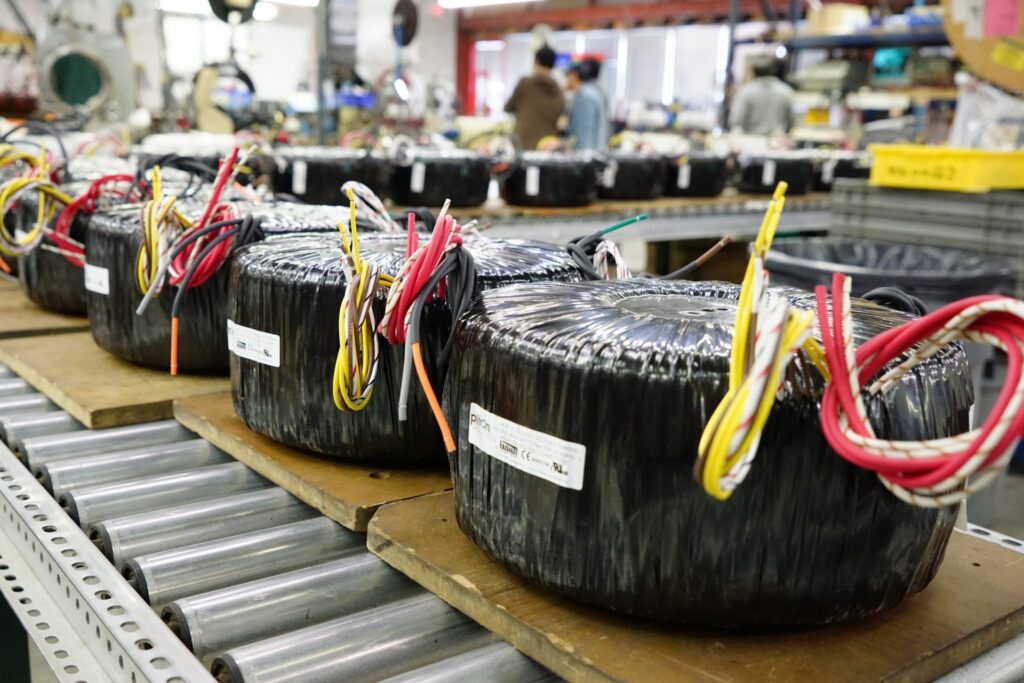
Torus Power’s line-conditioning products are built around large and heavy toroidal transformers that filter out interference on the AC line, and supply large amounts of current to connected components on demand.
While Power Transformers enjoy more mainstream acceptance than exotic cables, I’m a little skeptical about them as well. Shouldn’t a well-designed power supply in an amplifier be able to deliver all the energy needed to produce all the dynamics the amplifier can achieve? And shouldn’t that same power supply filter out any spurious noise before it reaches the voltage rails in the amp?
My skepticism about high-priced cables was reinforced by blind listening tests I conducted for the Canadian magazine Audio Ideas Guide in the early 1990s. For seven different listeners, I played a succession of clips using two eight-foot speaker cables, identified simply as Wire A and Wire B. Switching was instantaneous, performed with a Bryston switch box. One of the cables was an expensive (though not outrageous) specialty product (I forget the brand); the other was generic 16-gauge speaker wire purchased from Radio Shack.
The procedure was structured differently than most blind listening tests. Wire A might be the expensive brand and Wire B the cheap stuff, or vice versa. In other cases, Wire A and Wire B were both the same, either the expensive brand or the Radio Shack wire. The sequence was randomized for each listener. Before the listening tests, I told them about the methodology, so they knew that for half of the clips, Wire A and B would be the same.
All seven subjects were audiophiles and music-lovers. On a printed questionnaire, they were asked whether the two cables sounded the same or different. If the cables sounded different, they were asked if they had a preference and why.
Listeners correctly identified sameness and difference for about 51% of the total playback sessions: Basically a coin toss plus a rounding error. On the surface, this apparent randomness confirms the nay side of the debate: that the audible benefits of exotic speaker cables are essentially nil.
When I examined the data more deeply, I found something very interesting. On the first music clip they listened to, all seven subjects correctly identified sameness and difference. The 100% score could have happened by chance, but the odds of this are one in 128. I think a much likelier explanation is listener fatigue. In this unfamiliar setting, it became increasingly difficult for the test subjects to hear fine differences.
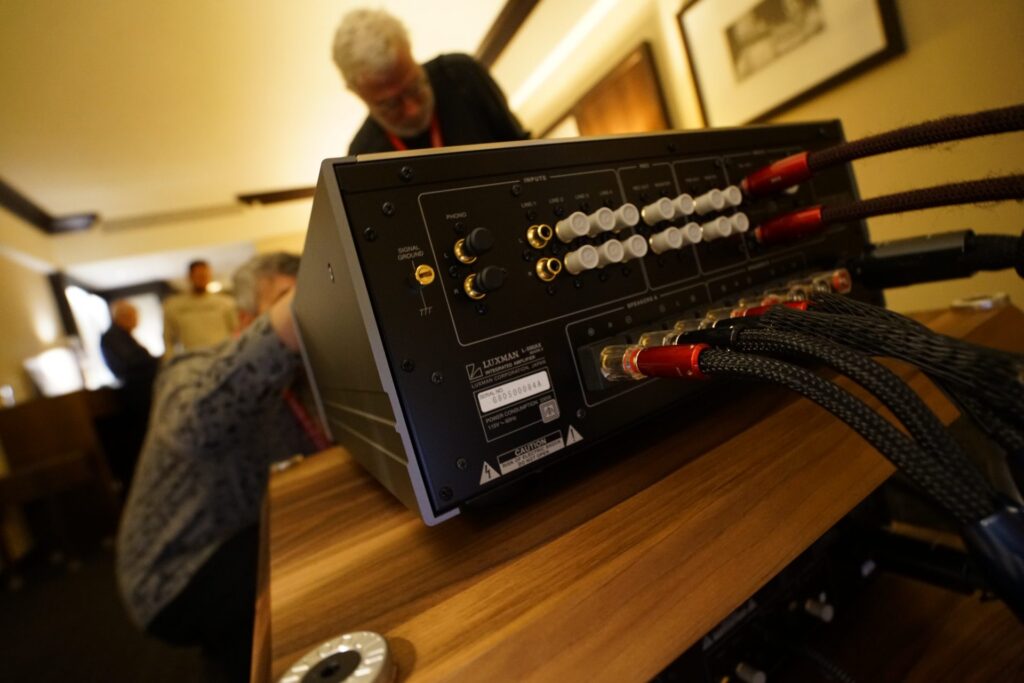
There’s no denying the eye candy element to a good looking cable
There was another interesting result: some subjects claiming to hear differences through the same cable. In one session, a listener stated that Wire B gave “a much more convincing portrayal of the musical event,” even though it was exactly the same as Wire A! Naysayers often attribute acceptance of premium cables to a placebo effect, and that would seem to be the case here.
Although there are lots reasons to be skeptical about audiophile cables, the case against them is far from conclusive. Many observers whose judgment in these matters I respect say these products have made unmistakable improvements in their systems.
QUESTIONS AND ANSWERS
Consequently, I’ve long wanted to conduct a test of my own, trying out premium cables in my own system, with my own music, on my own schedule, in my own home. I’ve also wanted to ask cable vendors pointed questions about their products. This article presented just such an opportunity.
At the outset, I sent pitches to several cable vendors requesting interviews and review samples. AudioQuest and Wireworld Cable Technology both sent a full package of review products; and their Founder/CEOs each spent the better part of an hour on the phone with me, patiently answering my questions.
The most vocal critics of audiophile cables have had little exposure to the products, maintains AudioQuest CEO William Low. “We don’t completely understand phenomena like directionality, but we have empirical evidence and we have solutions. There are people who have expertise in related fields, but not audio cables. Because there are no variables to explain these behaviours, they say these effects are imagined.”
The situation is similar to the mainstream view of amplifiers a couple of decades ago, Low believes. “Some people used to think that all amplifiers with similar specs sound alike. Cable has done a significant amount to take that view away. Naysayers are attracted to the frontier of what’s considered outrageous.”
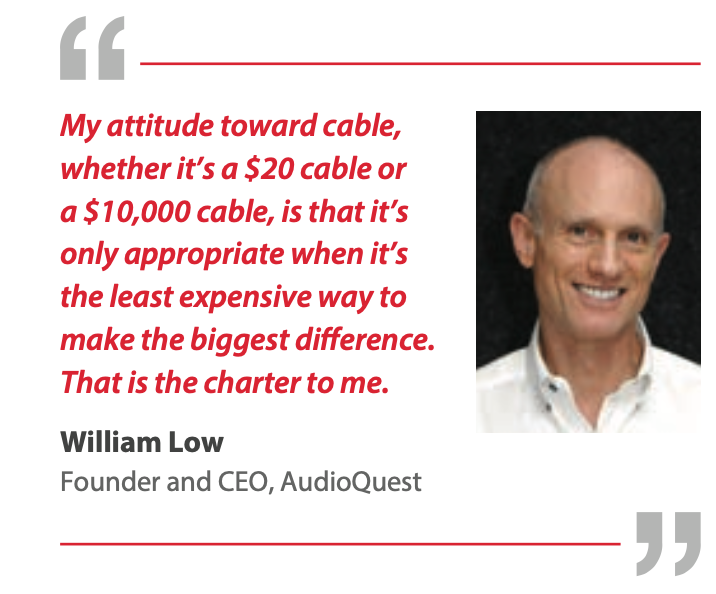
He says skeptics fall into a common philosophical trap: the belief that a chain is only as strong as the weakest link. “It’s the biggest lie in hi-fi. Between capturing an audio event and moving air with a loudspeaker, every step, every device adds distortion. Each link in the chain has its own problems.”
Power cords are a perfect illustration of this principle. An inadequate power cord will add distortion to that already present at the AC outlet – which may not be that bad. “The Romax in the walls of your house is 10- or 12-gauge,” Low says. “While the copper is fairly low quality, it’s solid core and there’s minimum resistance. A standard 12-gauge AC cord has 63 strands to make it flexible. This creates the problem of strand interaction, leading to various types of distortion on the surface of the strands. AudioQuest power cables are not flexible because they have solid conductors.”
Low compares audio reproduction to a series of stacked glass panes, with each pane making the scene behind a little less clear and a little more Colored. The goal for every stage, including cables, should be to damage the signal as little as possible, or to use AudioQuest’s analogy, to make sure each pane is as transparent as possible.
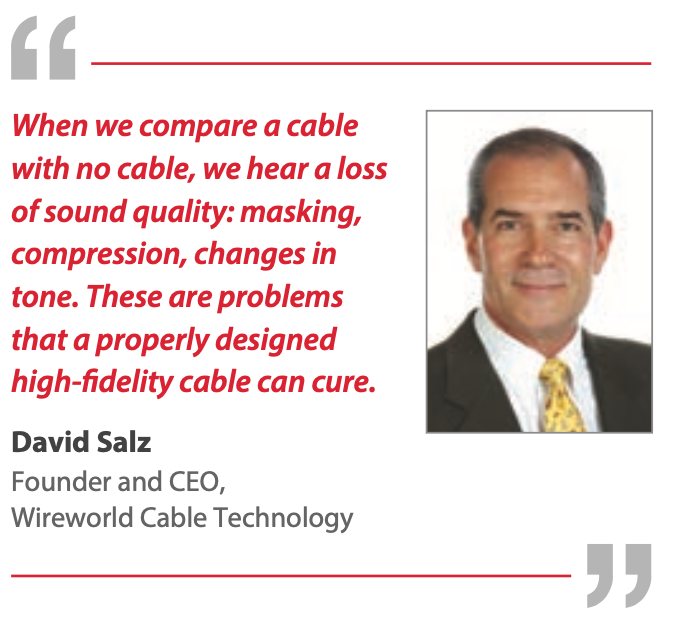
Wireworld’s goal is to build cables that sound as good as no cable at all, says CEO David Salz. For subjective evaluations, the company compares the cable under test with a direct connection between two components. For instance, to test an analog interconnect, Wireworld compares the cable with a direct connection between the source and destination components.
“To find out if you can make a better cable, you have to test to find out what you lose with a generic cable,” Salz states. “We need to test the cable as it’s normally used, then eliminate it and find out if we get any benefit. If we do not, the concept of an upgrade cable for that application does not exist.”
But all generic cables cause losses, Salz says. “When we compare a cable with no cable, we hear a loss of sound quality: masking, compression, changes in tone. These are problems that a properly designed high-fidelity cable can cure.”
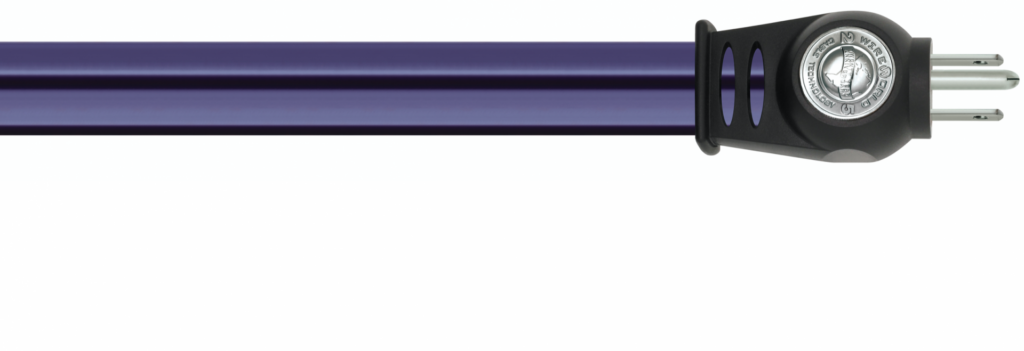
Wireworld’s Series 7 power cords features flat construction for easier installation, and dual low-impedance shields to minimize interference. Wireworld says its new Composilex 2 insulation minimizes “triboelectric noise,” which occurs when the insulation acquires and then releases an electrostatic charge. The step-up Aurora 7 cables provided for this article employs silver-clad oxygen-free copper (OFC) conductors and silver-clad copper alloy plug contacts.
Wireworld’s Series 7 power cords features flat construction for easier installation, and dual low-impedance shields to minimize interference. Wireworld says its new Composilex 2 insulation minimizes “triboelectric noise,” which occurs when the insulation acquires and then releases an electrostatic charge. The step-up Aurora 7 cables provided for this article employs silver-clad oxygen-free copper (OFC) conductors and silver-clad copper alloy plug contacts.
According to AudioQuest, the insulation can slow down the magnetic field associated with the electrical signal. This delay, which varies depending on frequency and amplitude, leads to phase distortion. AudioQuest says the air- filled foamed polyethylene insulation on its more expensive products absorbs much less energy, minimizing this effect. Its top-end models feature a Dielectric Bias System, in which a 72V battery is connected to a conductor that runs down the centre of the cable and to shielding around the outer surface. This “forms” the dielectric, the company says, aligning the molecules in the insulation so that they do not store and release energy. That technology is employed on the speaker wires, USB cable and NRG-10 power cords AudioQuest sent me for review.
Salz says dielectric absorption is a measurable phenomenon; but a larger issue is “triboelectric noise.” This is caused by the buildup and release of electrostatic charges in the insulation, which can be generated by the movement of electrons adjacent to the insulation and by mechanical vibration of the cable, causing friction between conductor and insulation. Wireworld says the “Composilex” insulation on its current Series 7 lineup minimizes this problem.
These issues can arise even in applications that one would think are impervious to noise and signal loss, such as short USB cables. But as Low points out, sending audio from the source to DAC is different from other USB applications, such as printing and video. “Audio is time-sensitive,” he says. “You’re carrying a signal that has to be kept as a single homogenous package.
“Transferring a digital file from one place to another happens in the analog domain,” he continues. “Ideally, a digital transmission is a series of square waves, and a perfect square wave requires infinite frequency response.” If the edges are rounded off excessively, or if the signal is otherwise degraded, the USB receiver may not read the data correctly. The DAC may request that the data be resent or use error correction to try to fix the damage.
Adds Salz: “The USB format is relatively fragile when it comes to streaming music. Relatively small differences in the waveform can affect the detection of the signal. We know that because when we add in a cable to one of these connections, the sound quality drops significantly. We can fix those and produce cables that sound relatively close to direct.”
What about cable directionality, another controversial claim? Low and Salz both believe it results from the way the conductor material is drawn during manufacturing. “RF garbage that corrupts the signal travels almost exclusively on the surface of the conductor,” Low elaborates. “The structure of the conductor is not symmetrical. There’s more noise, or random energy, when the cable is in the wrong direction.”
LISTEN FOR YOURSELF
Evaluating these claims is way beyond my competence. But that’s not the job I set out for myself here. Basically, I wanted to hear what some leading cable designers had to say about their industry and their products, then try those products in my own system.
My plan was to drink a whole pitcher of cable Kool-Aid, completely rewiring my system with specialty products. As I got close to my deadline, I’d pull out the premium stuff, go back to status quo ante and report on my findings. Had the new cables transformed my listening experience? Had they become an essential part of my system? Did they represent good value for money?
I described my system and listening habits to AudioQuest and Wireworld and asked them to send a suitable package. In addition to new speaker cables between my Simaudio Moon Nēo 340i integrated amp and KEF LS50 monitors, I also connected a new USB cable between my Mac Mini and the 340i’s built-in DAC, new interconnects between the Nēo 340i and Sunfire Atmos XT subwoofer, and new power cords for all my components.
I also used the occasion to address my skepticism about Power Transformers. Oakville-based Torus Power supplied two of its conditioners. All Torus products are built around large and heavy toroidal transformers. The transformers isolate connected components from the household and utility AC line. They employ Narrow Bandwidth Technology, which acts as a low-pass filter to block electromagnetic and radio-frequency interference (EMI and RFI) on the line. In audio applications, this produces a “blacker” sonic background and greater sonic purity, says Kevin Main, President Torus Power. The toroidal transformer can also deliver high instantaneous current to connected devices, which for audio applications translates to improved dynamics.
Priced at $1,799, the Torus TOT Max has a 1,800VA transformer and can deliver 15A of instantaneous current to devices connected to its eight AC outlets. Torus also supplied an RM 15 Plus, also equipped with a 1,800VA trans- former and rated at 15A, but with Series Mode Surge Suppression, 10 outlets, and improved mechanical isolation of the transformer. I tried both products; but settled on the smaller TOT Max (18kg as opposed to 37).
AudioQuest’s package included a 15’ NRG-10 power cord (US$1,499) to connect the Torus conditioner to the wall, 6’ NRG-10 power cord (US$779) for the amplifier, 6’ NRG-4 power cord (US$359) for the subwoofer, 6’ NRG-1.5 power cord (US$169) for the Mac Mini, two 10’ Boxer interconnects (US$179 each) for the subwoofer, a pair of 8’ GO-4 speaker cables (US$589), and 5’ Diamond USB cable (US$699). That adds up to roughly $5,500 Canadian, which is about half of the retail price of my components (including the Mac Mini).
I asked Stephen Mejias, AudioQuest’s Vice President of Communications (and a former Stereophile columnist), about this. “We tried to provide you with cables that an audiophile consumer would actually purchase for a system like yours,” he responded. “But we also wanted to show that other options exist. It’s up to the customer to decide how far he or she wants to go up the ladder.”
The Wireworld package included a 1m Platinum Starlight USB cable (US$700), a 2m pair of Mini Eclipse 7 speaker cables (US$430), 4m Equinox Mono subwoofer cable (US$310), 4m Aurora 7 power cord (US$460) to connect the Torus TOT Max to the wall outlet, and two 2m Stratus 7 power cords (US$120 each) for the amplifier and subwoofer.
TIME TO LISTEN
Originally, I had planned to listen to products from just one supplier. But the two shipments were sent out almost simultaneously, so I gave them both a listen. The AudioQuest package arrived first, and I added their cables to my system right away.
There was an immediate transformation. Playing a variety of jazz and classical albums I know well, I noticed greater speed and clarity, but also greater refinement and delicacy. Dynamics were improved. The background was blacker; and the sound was purer, with less grain. A casual listener might not notice (or care about) these improvements, but I think any audiophile or music-lover would.
The Torus products arrived a couple of days later, so I swapped in the TOT Max for the Energy surge suppressor I’ve been using for several years. There was an even greater improvement in blackness, speed and especially dynamics. Not only were transients faster, the sustain and decay were more natural.
The combination of new cables and power transformer made it easier to separate different strands of music. A case in point is Michael Nyman’s MGV (Argo, CD rip, ALAC). Composed for the launch of France’s Train à Grande Vitesse, this marvelous score recreates the rhythms and sounds of train travel. With the AudioQuest cables and Torus conditioner, my system opened up these layers in a way I’d never heard.
There was a marked improvement in bass, probably because the Sunfire subwoofer was getting more energy more quickly. Bass was more impactful and articulate, and also better integrated with the KEF monitors.
Besides improving intelligibility and resolution, these add-ons made the music more organic, more whole. And it sounded bigger. I recall listening to Sir Colin Davis conduct Elgar’s Second Symphony in London’s Barbican Hall several years ago, and thinking to myself that bigness is what separates reproduced sound from major live events. No hi-fi could ever sound this big, I thought. While my system didn’t sound Barbican- big with these enhancements, the sound assumed a different scale.
Stereo imaging improved as well, especially in precision, with musicians being more firmly delineated in the space between and behind my KEF LS50 monitors.
Were these big cables making me fool myself into hearing what I saw? Had I swallowed a placebo with all that cable Kool-Aid? I found out a week later when I restored my system to its original state.
I did it piecemeal. Going back to the Excelsior speaker cables, the sound was a little more veiled and a little less dynamic. Going back to a generic USB cable, the sound became more smeared and less involving, and less dynamic as well. After replacing the big AudioQuest power cords with generic cords, I noticed that transient attacks were slower, and dynamics were less exciting. Going back to the Energy suppressor from the Torus conditioner, the sound became more veiled and grainier. Transients became duller still, and the overall presentation became smaller. My system as it was before this experiment now sounded less organic, less involving, less whole.
Ten minutes told me I wanted the new stuff back in. Reconnecting the Torus and premium cables, the sound again became bigger and more dynamic. The listening experience became more of a musical event, as opposed to a succession of sounds. Details were rendered more convincingly, with greater expression. I was more aware of both musical technique and artistic intent.
During my final few days of listening, I substituted the Wireworld products for the AudioQuest package. The improvements over the generic cables were on a similar scale; but there was a difference in emphasis. I thought the Wireworld products sounded slightly more neutral and precise; while the AudioQuest cabling sounded slightly bigger, more dramatic and more rounded. I think the difference would matter only to very obsessive audiophiles.
A tiebreaker, if one is needed, is appearance and domesticity. The AudioQuest cables are thicker and more visibly dominant than their Wireworld counterparts. The power cords and speaker cables are only slightly less thick than a garden house, and about as (in)flexible. On more than one occasion, moving the Moon Nēo 340i amplifier slightly dislodged the AudioQuest power cord, shutting the system down. To adapt Floyd Toole’s Colorful analogy, exotic cables may not be just audio jewelry. But they certainly are jewelry in the sense that appearance is part of their appeal.
So after drinking all this cable Kool-Aid, what do I think of it? I like it! These products transformed the sound of my system, to the point where I want them to be a permanent part of my setup. Rather than changing my components’ overall character, they seemed to unlock their true potential.
I’ll put my money where my mouth is. The Torus TOT Max is a no-brainer for me; it will definitely stay. I will also upgrade the power, speaker and USB cables, though I may search for lower-priced alternatives to the samples provided by AudioQuest and Wireworld. But after hearing what I heard, I can’t go back to status quo ante. If that makes me a convert, so be it.
This story originally appeared in the April 2015 print edition of Wifi Hifi – The debate however continues to today.
